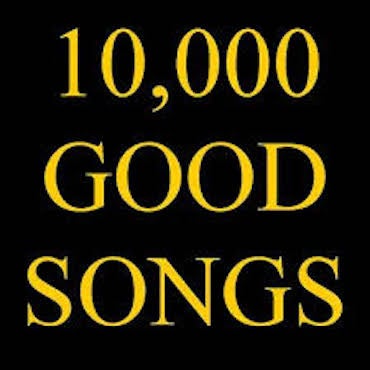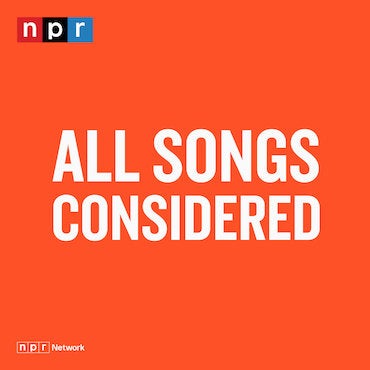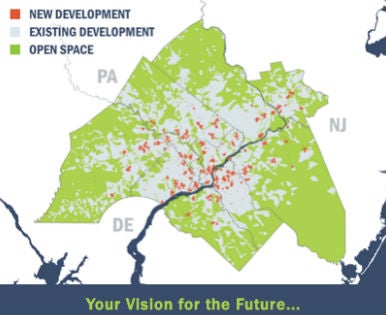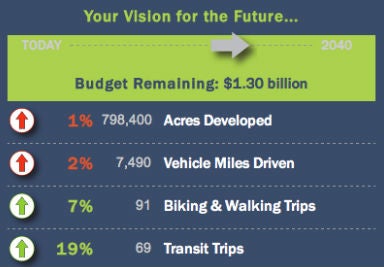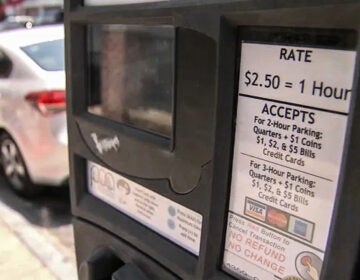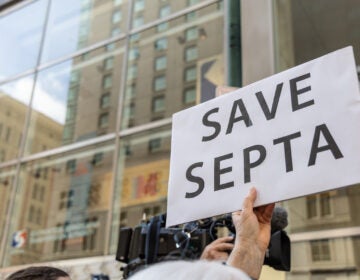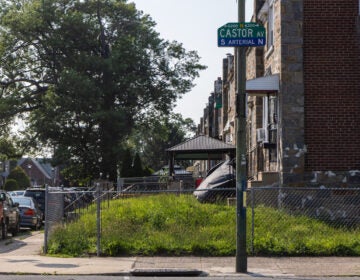New DVRPC site demonstrates lack of funding, crowd sources solutions
The cost of simply maintaining the Greater Philadelphia region’s bridges and roadways between 2012 and 2040 is an estimated $77.5 billion – more than twice the anticipated revenue for all transportation projects. In this 27-year period, as many as 100 state maintained bridges in the region could close due to a lack of funding, and as the region’s population is projected to grow by 600,000 residents, this could impact as many as 700,000 drivers daily.
To help users understand, crowd source ideas and move forward despite declining funds, the Delaware Valley Regional Planning Commission has launched “Choices & Voices,” an interactive web-based platform.
Transit funding needs
DVRPC launched the online tool “Connections 2040: Choices & Voices” in conjunction with its “Connections 2040: Transportation Investment Scenarios” report. This report outlines three potential funding scenarios – high, medium and low funding – and according to DVRPC, between 2012 and 2040, the region will likely receive funds somewhere between the medium and low funding scenarios.
In the worst case scenario – the low funding outlook – as many as 100 state maintained bridges would deteriorate and close due to a lack of funding, and as many as 700,000 drivers would be impacted daily.
Even if the region receives the medium level of funding, drivers will face higher costs because if roads are not kept in a state-of-good-repair, vehicle maintenance costs rise.
“When you let roads slip into poor conditions… the result is kind of a double tax,” said Brett Fusco, DVRPC transportation planner.
When roads are not maintained, it ends up costing drivers more to fix their cars than it would have cost to fix the roadway, he said.
The costs add up for the region as well.
“The longer you let a road or bridge deteriorate, the more expensive it will be to repair,” said Michael Boyer, manager of the DVRPC Office of Long-Range Planning and Economic Coordination.
It is similar for transit.
“If you look at transit vehicles, the longer you extend a vehicle past shelf life, the more expensive it is to keep that vehicle on the road,” Boyer said.
Necessary, high-cost maintenance projects, like the I-95 reconstruction, do not help the funding outlook.
“I-95 coming to the end of its useful life is a critical issue for the region,” Fusco said.
The project will cost the region an estimated $22 billion, between half and one-third of the region’s total transportation funding between 2012 and 2040.
“Of course you can always cut corners, but you’re going to have some kind of impacts,” Boyer said.
“Choices & Voices”
Helping area residents and stakeholders understand those impacts is one goal of “Choices & Voices.”
The tool asks users what kind of development they would like to see as the region’s population grows, which additional transportation funding measures they would support and how they would spend the limited transportation budget.
Depending on which development pattern and additional funding options users select, “Choices & Voices” gives a projected budget. Users are then asked to divide this funding between road and bridge maintenance, transportation maintenance, operational improvements and system expansion projects. As each category eats away at the budget, it is easy to see the difficult situation regional planners face.
“One of the lessons we learned is we need to do a better job conveying not just what the state of the transportation [system] is but also how it’s funded,” Boyer said.
Fusco said “Choices & Voices” is a new way for DVRPC to reach new public interest groups, get input from people who may not be able to attend public meetings but who have time to sit at their computer for a few minutes and to simplify the transportation funding dilemma for people trying to understand it.
Increased regional funding
One goal of “Choices & Voices” is to focus on increased regional transportation spending. Fusco and Boyer said that, compared to other large urban areas in the United States, the Philadelphia region has one of the lowest rates of local funding for transportation projects.
Unlike these other regions, the Philadelphia region relies more heavily on federal and state funds.
Most of the federal transportation funding comes through the gasoline tax, but as higher fuel efficiency vehicles and alternative fuels become more prevalent, the gas tax revenue will continue to decrease, Boyer said.
“If other regions of the country continue to make those investments locally, they will be in a much better situation for economic growth,” he said.
To increase regional transportation funding, “Choices & Voices” asks users which additional measures they would be most willing to support – congestion pricing, placing tolls on limited access highways, mileage fees, increased gas tax, increased transit fares, increased vehicle registration costs, increased general sales tax or user-proposed measures.
DVRPC tried to make these measures relatable by showing how much each of the options would cost the average household per month or per year. For instance, if a five-cents-per-gallon sales tax is added to gasoline sold in the five-county Greater Philadelphia region, the tax will generate about $73 million per year and cost the average driver about $3 per month.
With limited transit funding, Boyer and Fusco said, the region must also continue to reduce project costs, streamline the project review process, use new, cost-saving technology and prioritize projects to get the biggest bang for the buck.
The user-generated feedback from “Choices & Voices” and the “Connections 2040: Transportation Investment Scenarios” report will be used to extend DVRPC’s long-range plan from its current 2035 outlook to its next 2040 outlook.
Contact the reporter at cfisher@planphilly.com
WHYY is your source for fact-based, in-depth journalism and information. As a nonprofit organization, we rely on financial support from readers like you. Please give today.
